https://365datascience.com/ibm-data-science-consulting/ -
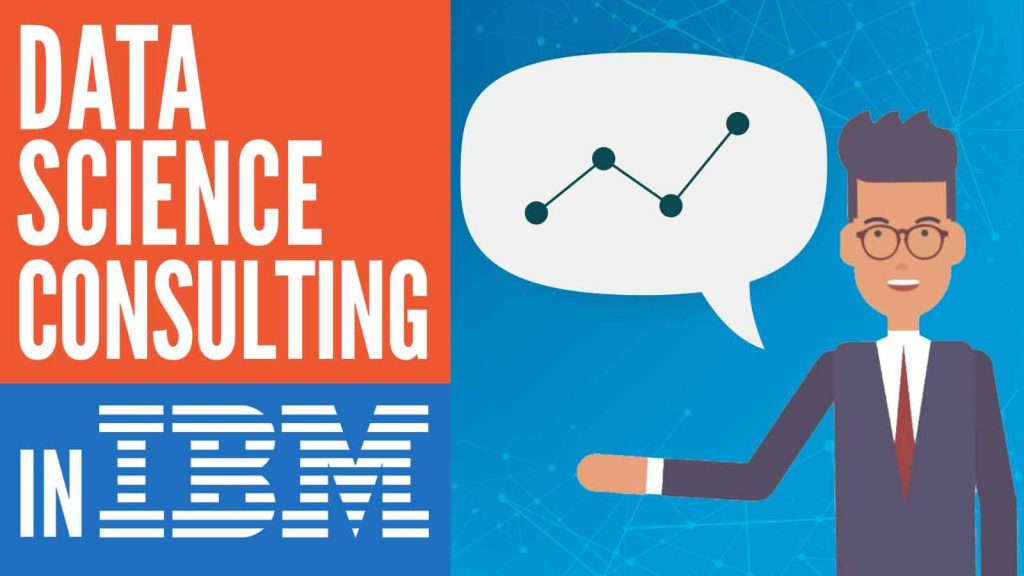
What’s the IBM data science consulting process in practice?
In this article, we’ll focus on the step-by-step process IBM’s data science team applies when working on a consulting project. We believe this overview can be highly beneficial for both expert professionals and data science beginners.
We’ll explore a best-practice framework applied by one of the pioneer and leading companies in the field. This way, you’ll get an insider’s look at how a consulting project that involves data analysis and data science unfolds.
In addition, we’ll examine the results achieved in IBM data science consulting projects with major clients from different industries, such as Nedbank, JP Morgan, and Experian.
Why is that important?
Well, each of these initiatives serves as an invaluable lesson to the rest of the companies in their field. Let’s say Carrefour managed to leverage AI to improve its supply chain processes. Then, the rest of the global hypermarket chains would basically be obliged to follow… If they want to keep up.
IBM Data Science Consulting: Stages of a Data Science Consulting Project
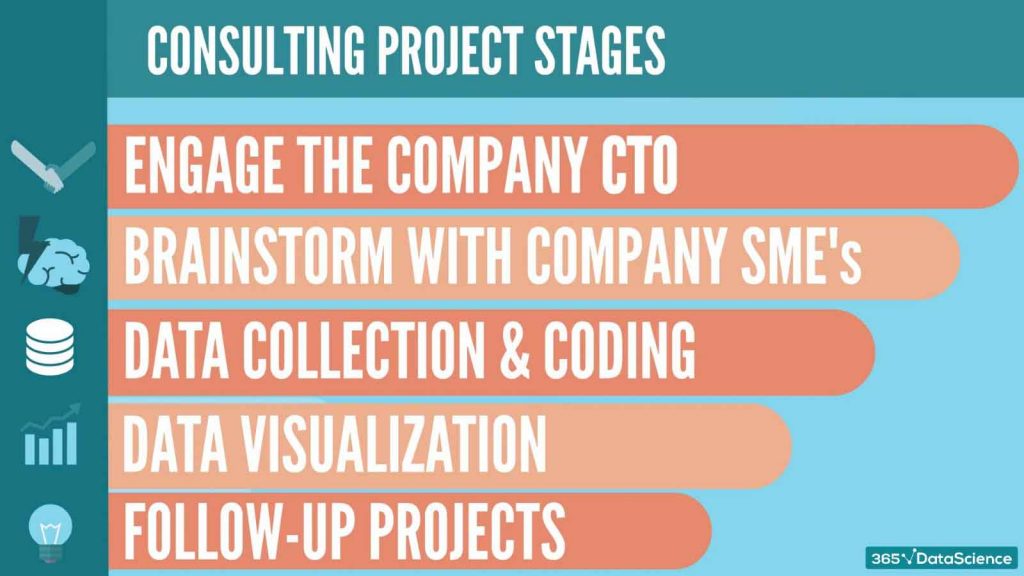
Let’s get right in and outline the five stages of a data science consulting project.
- Engage the firm’s CTO;
- Meet with the company’s SMEs and brainstorm;
- Data collection and modeling through coding sprints;
- Visualization and communication of findings;
- Follow-up projects.
Each of these steps of the process is vital. So let’s elaborate a bit further by describing them one by one in more detail.
Things start with a conversation with the firm’s Chief Technology Officer.
He needs to be sold on the project. Hopefully, this would result in him championing and endorsing the initiative across the organization. Such buy-in enables cooperation and improves the project’s chances of success. At this stage, the consulting team and the CTO will define the scope of work and the ‘lowest hanging fruits’. The latter will give an immediate boost in terms of bottom-line results. But what do we mean by ‘lowest hanging fruit’? It is the easiest-to-implement opportunity that the data science team knows is available for most companies in an industry. For example, occasions indicating that supermarket chains can greatly reduce food waste by using a predictive AI model to adjust the timing of deliveries.
So, an absolute best practice in consulting projects is to address such opportunities first. This gives instant credibility to the project team and wins support across the organization.
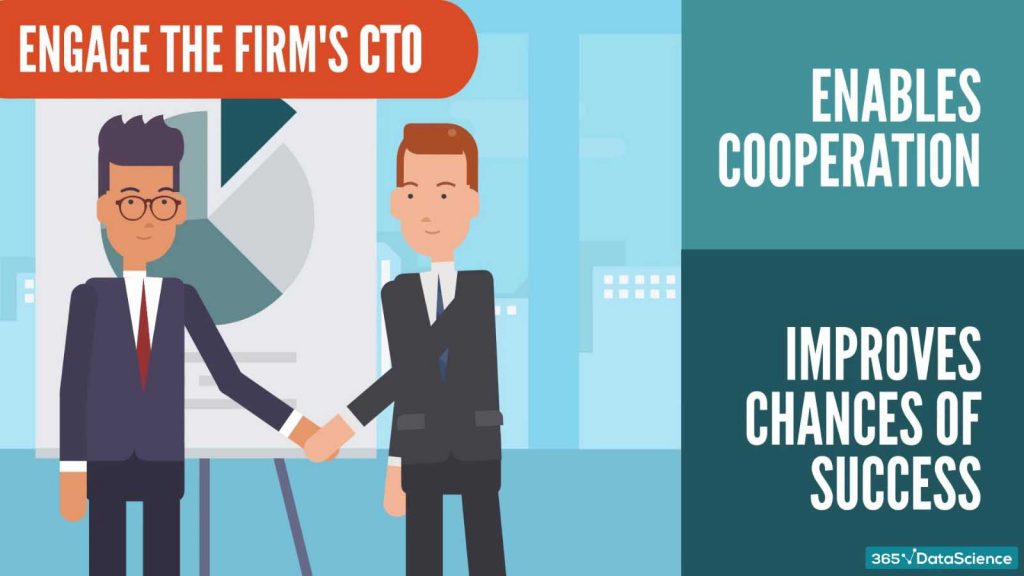
Once the project scope has been identified with the firm’s CTO, the data science consulting team brainstorms on how AI can be applied in the particular pre-selected use cases.
To envision this a bit better, the team needs to conduct a series of interviews and meetings with Subject Matter Experts. These are the people who work in the business day in and day out. They are also the ones who can contribute greatly to identifying actionable and meaningful solutions. Also, in most cases, SMEs have a good idea of what data is available; and if it can be used for the purposes of the project at hand.
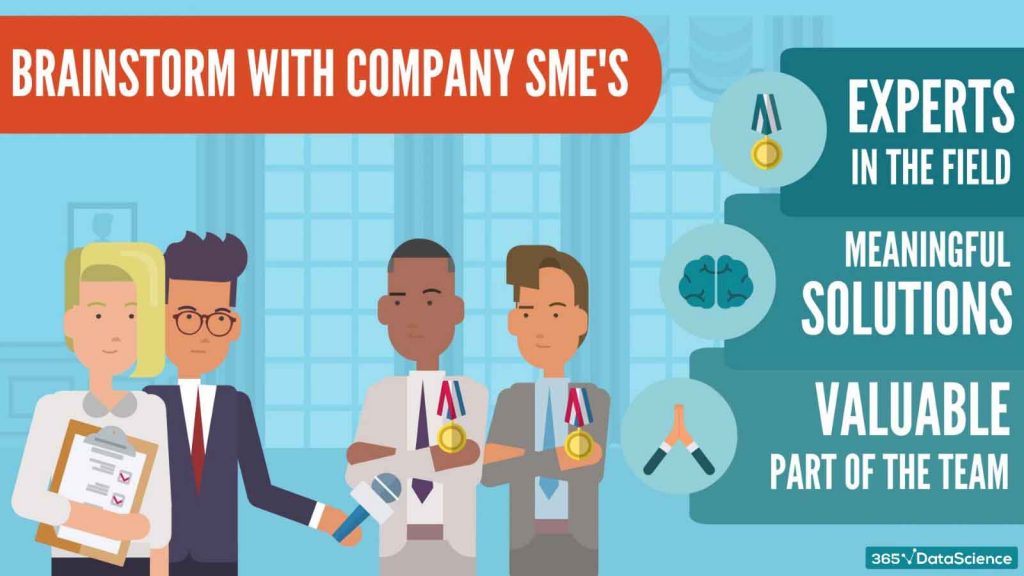
The next stage consists of coding sprints. This is the main chunk of the work. So, IBM’s team organizes it into three parts.
One for Collecting data and feature modeling
Data collection sounds like ‘getting the data from all places’. However, it can be much trickier. Depending on the scope of the project, the consulting company may need to first consolidate all data in one place. This is what we call ‘a data warehouse’. In some cases, the amount of data is not enough. This means new data sources must be set up. Feature modeling is also inside this step. The reason behind this is that features may be chosen from the available data. Sometimes, however, very important metrics are not being measured. The consulting firm can then suggest collecting data on that. Thus, it changes the data collection structure of the client.
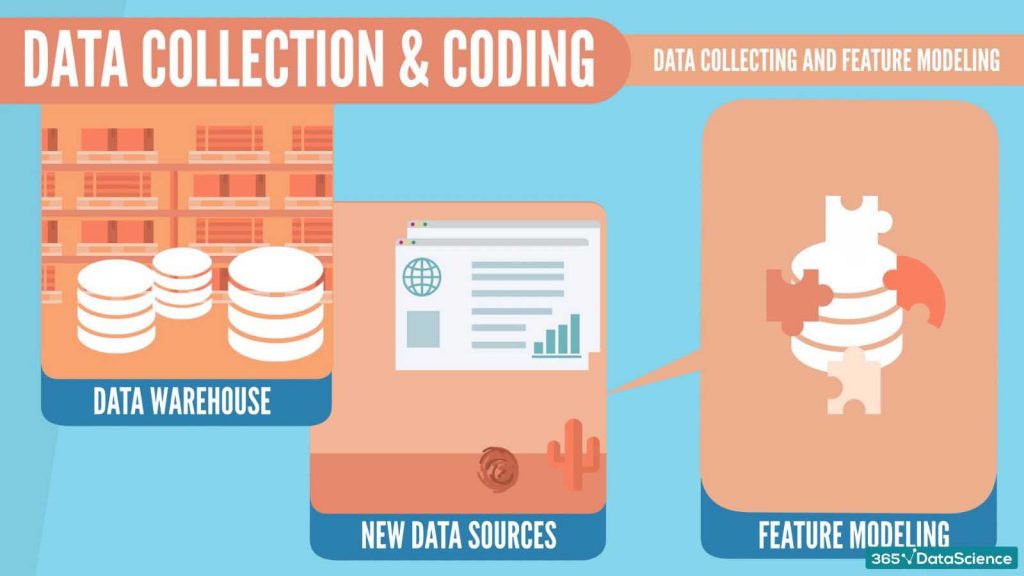
Another sprint for feature selection and running the model for the first time
Once data has been collected and features have been modeled, it is time for some data science.
Specialists modeled and kind of selected features during the first sprint. However, they never tested them a model. So, in the second coding sprint, the team
- evaluates,
- transforms,
- or engineers new features.
Only this time for predictive modeling purposes. Once ready, the first models come to life, demonstrating the potential to the stakeholders in the client company.
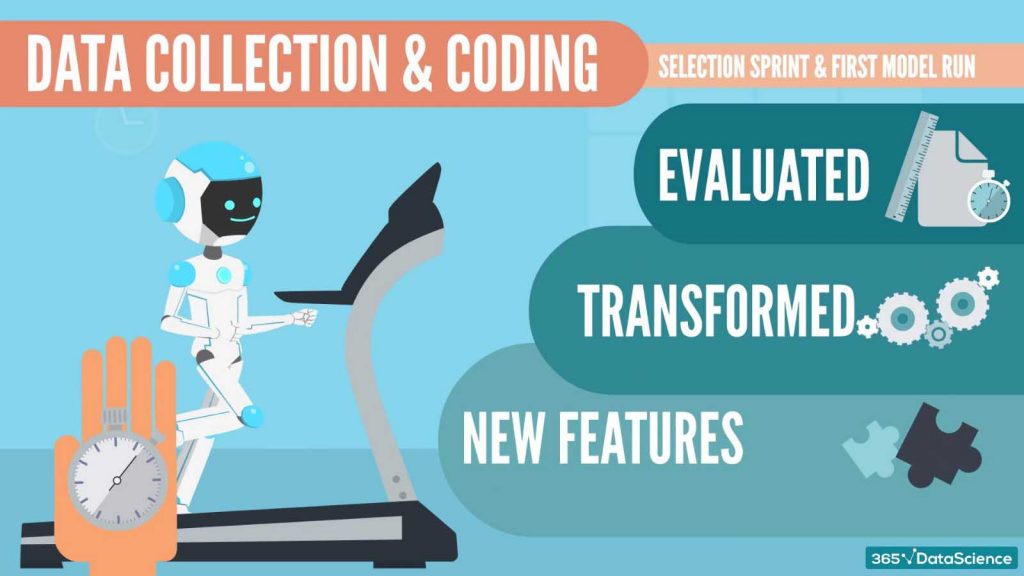
And a third sprint to fine-tune the model and adjust it as per client requirements
The moment a solid model has been thought through and executed, the fine-tuning begins. There are many ways to improve a model. A 1% increase in accuracy could imply millions of dollars in savings for the client company. Therefore, this step should not be overlooked. Even if it sounds like the least exciting one.
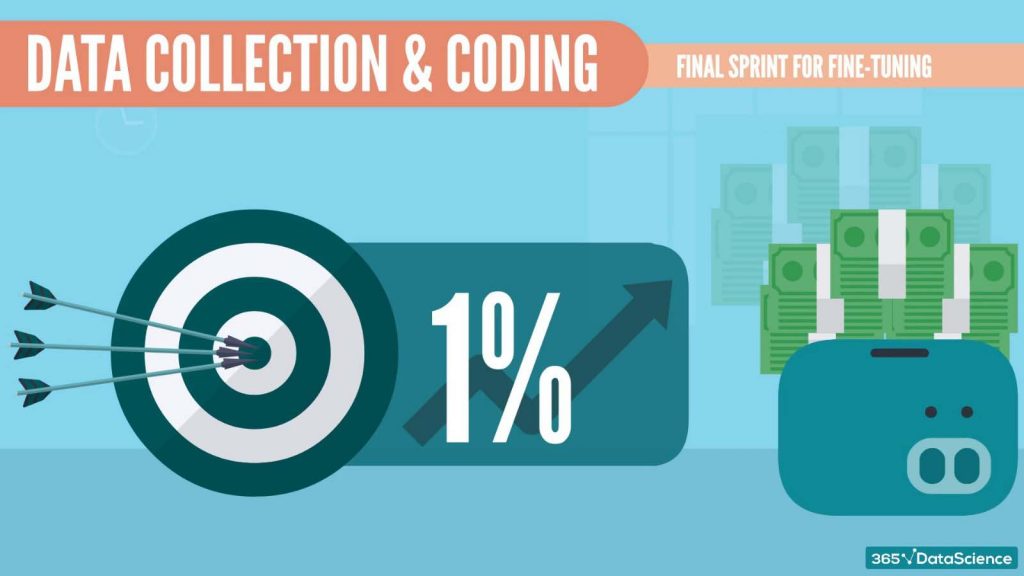
The fourth stage is data visualization.
Data visualization plays a critical role in most data science projects. However, please bear in mind the following. The specialists who build a model are not always the ones best equipped to visualize its findings. When presenting in front of a non-technical business team, Tableau or Power BI graphs are preferable to a Jupyter notebook. So, the data science consulting team needs chart and dashboard creation skills… And the ability to communicate in an effective way. It is not uncommon to have a person whose job is to solely style such findings. In fact, this is the final touch to a successful presentation.
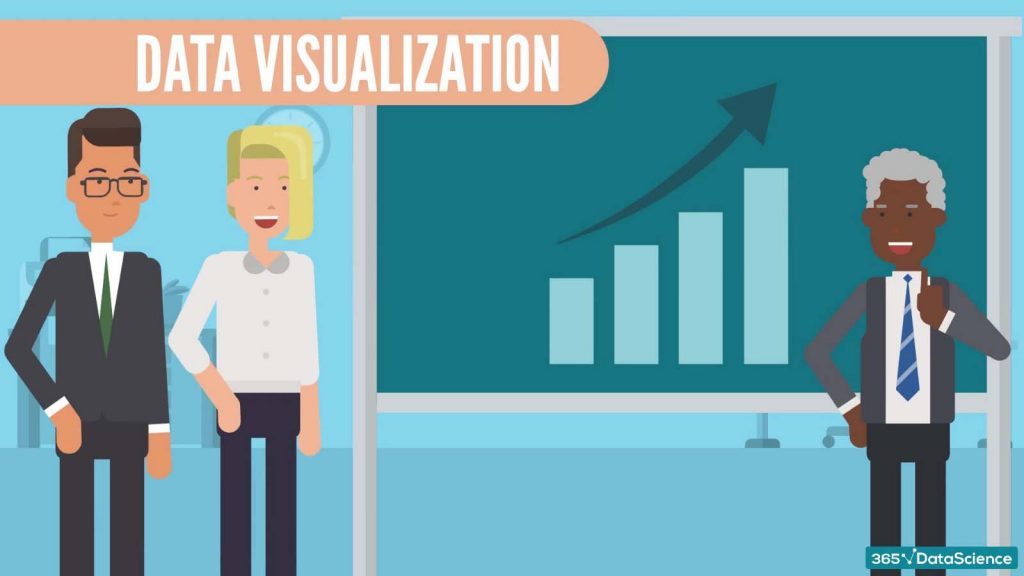
And this is where we reach the fifth stage – follow-up projects.
As with any other type of consulting, data science consulting is no different. The secret sauce of being a successful consultant? To be able to sell the next project. And then to sell the next one after that. And so on.
The premise is the following. If the company sees a measurable bottom-line improvement, they’ll want to retain the consulting team. And they’ll be willing to purchase additional services. This is also why consulting firms prefer to start with low-hanging fruits. It allows them to show they can create value very fast. And hence they improve their chances of being hired again.
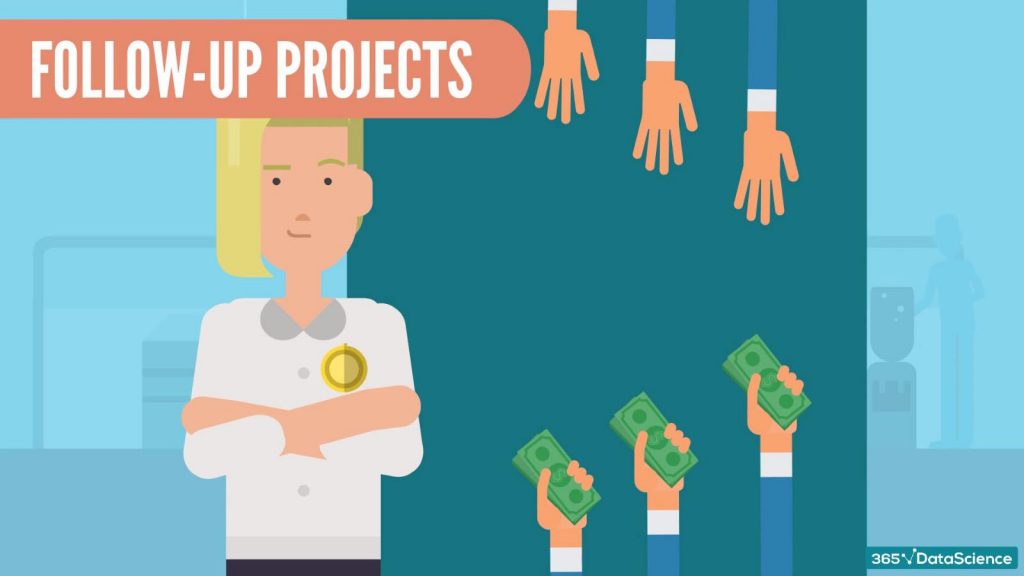
So, we’ve figured out the typical cycle of a data science consulting project. Let’s take a look at some of the successful use cases of the elite IBM’s data science consulting team.
IBM Data Science Consulting: Successful Use Cases
Starting with… Nedbank.
Nedbank, a South African bank, implemented a model predicting ATMs’ need for repair. This led to important efficiencies in ATM reliability and maintenance timeliness.
In another project, IBM’s data science team helped JP Morgan implement a powerful predictive model. The said model prevented the bank’s traders from engaging with inadvisable trades.
Experian is one of the leading companies in the information business industry.
They analyze credit payments on a global scale for a number of institutions. IBM’s team helped Experian leverage unstructured data and combine it with structured data they traditionally used in their models. This way, they managed to build a more comprehensive view of Experian clients’ businesses.
You could argue that data science and AI consulting is a business in its infancy. And that IBM’s team has only mastered the most important ingredient. Namely, the combination of technical know-how in terms of data science modeling and business understanding.
Truth is, a successful data science project needs both.
This is precisely why we try to teach you how data science can be applied in a business context in every course of the 365 Data Science program. Want to explore the curriculum or sign up 12 hours of beginner to advanced video content for free? Click on the button below.
#DataScience
#365datascience #DataScience #data #science #365datascience #BigData #tutorial #infographic #career #salary #education #howto #scientist #engineer #course #engineer #MachineLearning #machine #learning #certificate #udemy
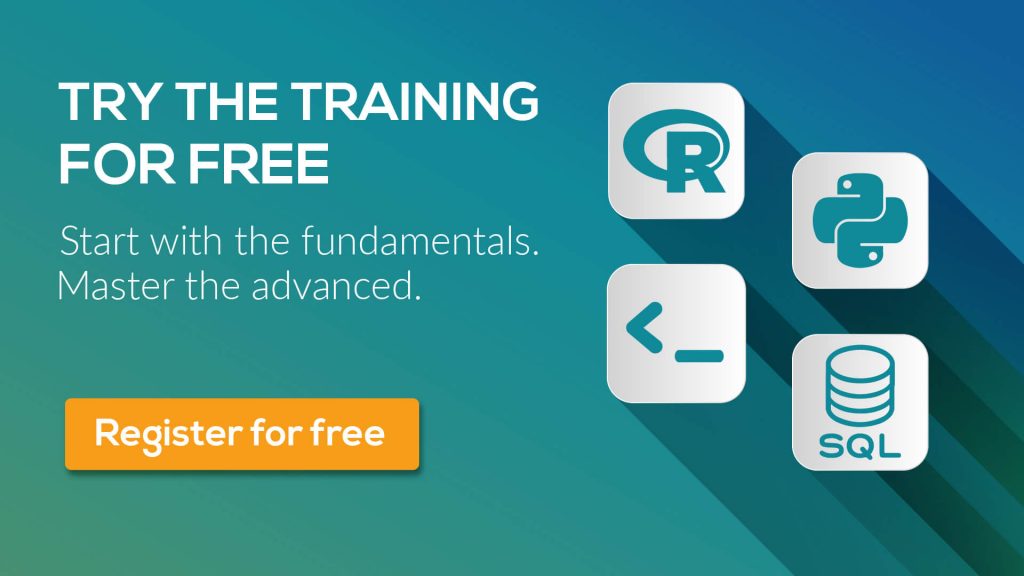
No comments:
Post a Comment